Your Favorite Image?
Which of today’s four featured and very different avian images is your favorite? All are invited to leave a comment and let us know why they made their choice.
Just for the Record
If you are not using a Sony a1 for bird photography, you are making your life far more difficult than it needs to be. Period.
What’s Up?
Me, still. Flying high and loving life. And this IPT group. Wednesday was a bit slow at our usual morning spot, so we hit the back-up location early. Things began slowly and it took me a while to come up with a plan, but once I figured out where we needed to be, we all made some excellent images of Snowy Egrets catching greenbacks under the pier and then flying back up to the railing. Story and images soon. Even better, I created two of the very best action images in 38+ years of trying. Thanks to Anita North, Anke Frohlich, and Sony. Photos and the whole story tomorrow.
I had my traditional last day lunch at the Neptune Grill — a big slice of their legendary peanut butter pie and a large glass of ice cold almond milk (unsweetened …) I took the group out for an early dinner at Pia’s Trattoria in Gulfport. DeSoto IPT regular Jim Miller had his favorite, the Homemade Lasagna, made with Pia’s Classic Bolognese Sauce Utilizing Grass Fed-Free Roaming Florida Beef and layers of Parmesan Béchamel served in a Cast Iron Skillet. I had mine: Parmigiana di Melanzane, Classic Layered Pan Fried Eggplant Served in a Skillet with Pomodoro Sauce, Mozzarella and Parmiggiano-Reggiano Cheese. New friend Peter Dominowksi enjoyed the Pesto Rosso: Spicy Sun-dried Tomatoes, Parmesan, Garlic and Italian Extra Virgin Olive Oil – Hand Ground into a Paste and then Tossed with Italian Penne Pasta. Brendan, the kid in the group, got to the restaurant, could not find our table, and headed to DeSoto. We did the same and found a cooperative Tricolored Heron. The wind from the east did not help our cause. We did OK at my favorite sunset spot and then headed for bed.
Today is Friday 29 April, the last morning of the 2022 DeSoto Spring IPT. Again, the forecast for the morning is for clear with a brisk east wind, perfect for bird photography. Wherever you are and whatever you are doing, I hope that you too have a great day. This blog post took about 90 minutes to prepare and makes forty-nine days in a row with a new one.
Please remember to use the B&H and Amazon links that are found on most blog pages and to use the BIRDSASART discount code at checkout when purchasing your new gear from Bedfords. Please, also, consider joining a BAA IPT. You will be amazed at how much you will learn!
BIRDS AS ART Image Optimization Service (BAA IOS)
Send a PayPal for $62.00 to birdsasart@verizon.net or call Jim at 863-692-0906 and put $62.00 on your credit card. Pick one of your best images and upload the raw file using a large file sending service like Hightail or DropBox and then send me the link via e-mail. I will download and save your raw file, evaluate the exposure and sharpness, and optimize the image as if it were my own after converting the raw file in Adobe Camera Raw. Best of all, I will make a screen recording of the entire process and send you a link to the video to download, save and study.
|
|
|
This image was created on 26 April on the Spring 2022 Fort DeSoto Park IPT. While standing along the edge of the surf I used the hand held Sony FE 200-600mm f/5.6-6.3 G OSS lens (at 600mm) and The One, the Sony Alpha 1 Mirrorless digital camera. ) The exposure for Royal Terns in flight was determined using Zebra technology with ISO on the Thumb Dial. ISO 800. 1/4000 second at f/6.3 (wide-open) in Manual Mode. AWB at 8:03:52am on a mostly clear morning. RawDigger showed the exposure for this Piping Plover to be 2/3 stop too dark. Tracking: Zone AF-C with Bird Face/Eye Detection performed perfectly. Be sure to click on the image to enjoy a high-res version. Image #1: Piping Plover in flat flight
|
Is That My Image?
Without the Sony a1 in my hands I could never have dreamed of creating a razor-sharp image of a small, fast shorebird in flight. I do not have the physical tools to make such images consistently, but once in a while, I can do it. In addition, the 200-600 lens is an incredible tool for creating images of flying and running shorebirds.
I was set up for images of the brighter, whiter Royal Terns. When the endangered plover flew by, I did not have time to fiddle with the exposure. I made a series of eight images that included one special one.
|
|
|
This image was created on 26 April on the Spring 2022 Fort DeSoto Park IPT. Using the ankle-pod technique while seated, I worked with the hand held Sony FE 200-600mm f/5.6-6.3 G OSS lens (at 553mm) and The One, the Sony Alpha 1 Mirrorless digital camera. ) The exposure was determined using Zebra technology with ISO on the Thumb Dial. ISO 800. 1/1000 second at f/6.3 (wide-open) in Manual Mode. AWB at 6:25:24pm on a mostly sunny afternoon. RawDigger showed the exposure to be perfect. Tracking: Spot S AF-C with Bird Face/Eye Detection performed perfectly. Be sure to click on the image to enjoy a high-res version. Image #2: Red-breasted Merganser winter plumage female hauled out
|
Working the Subject
My eyes lit up when I saw this merganser hauled out on the sand. I sat down while a good distance from the bird and advanced slowly with my rig on my lap by pushing myself forward with my fists. Fun in the wet mud. But it got the job done. For this one I had to zoom out a bit to give the bird enough room in the frame.
|
|
|
This image was created on 27 April on the Spring 2022 Fort DeSoto Park IPT. Again, I used the ankle-pod technique with the hand held Sony FE 200-600mm f/5.6-6.3 G OSS lens (at 529mm) and The One, the Sony Alpha 1 Mirrorless digital camera. ) The exposure was determined using Zebra technology with ISO on the Thumb Dial. ISO 800. 1/4000 second at f/6.3 (wide-open) in Manual Mode. AWB at 6:44:29pm on a mostly sunny afternoon. RawDigger showed the exposure to be perfect. Tracking: Spot S AF-C with Bird Face/Eye Detection performed perfectly. Be sure to click on the image to enjoy a high-res version. Image #3: Laughing Gull jumping up after bath
|
The Ankle-pod Technique
The more I use, practice, and teach the ankle-pod technique, the better the results. Right now, I have the technique pretty much perfected. It is so effective that I rarely bring a Panning Ground-Pod into the field anymore. For the flapping after bath shots, I set the shutter speed to at least 1/2000 second. Working off the tilted rear monitor and trusting the a1’s AF system, I can follow the birds and frame the image with the lens on my ankle as they jump into the air after a bath.
I learned on Wednesday that if a tern or a gull fills about 1/3 to 1/2 of the frame at 600mm (with the 200-600), that I can avoid clipping the wings most of the time when they flap by zooming out to 500mm or a bit more. I can now class myself as deadly when using the ankle-pod technique. And best of all, I can teach you to become proficient with it. Join me in Jacksonville to learn to perfect your ankle-podding.
|
|
|
This image was created on 28 April on the Spring 2022 Fort DeSoto Park IPT. While seated, I used the hand held Sony FE 200-600mm f/5.6-6.3 G OSS lens (at 600mm) and The One, the Sony Alpha 1 Mirrorless digital camera. ) The exposure was determined using Zebra technology with ISO on the Thumb Dial. ISO 1000. 1/1600 second at f/6.3 (wide-open) in Manual Mode. AWB at 7:29:06am on a sunny morning. RawDigger showed the exposure to be dead-solid perfect. Tracking: Zone AF-C with Bird Face/Eye Detection performed perfectly. Be sure to click on the image to enjoy a high-res version. Image #4: Ruddy Turnstone male running on the edge of the surf
|
Getting Up Early
We got to the beach very early and headed straight to the Gulf in hopes of finding a few flocks of Red Knots. But there were only Sanderlings and turnstones. Most of the birds were working from right to left as they fed along the edge of the surf. We would get ahead of the birds and ahead of sun angle, sit on the wet sand, and let the birds work their way to us. Oftentimes they would sense our presence and begin to run. In those situations, the a1 is at its best. With Tracking: Zone, the AF system tracks the face or the eye accurately.
200-600 Versatility
Take a moment to consider the variety and quality of the eight images featured in the last two blog posts. When I do that, I am astounded. Then add the 1.4X TC and consider the Red Knot images in Tuesday’s blog post …
|
|
|
Click on the image to better see the green eye-AF boxes in action. Sony Alpha 1 Flight Photography AF Points! |
The SONY Alpha a1 Set-up Guide and Info Group: $150.00 (or Free)
The SONY Alpha a1 Set-up Guide and Info Group is going great guns as more and more folks chime in with thoughtful questions and experience-based answers. As the a1 is becoming more readily available, more and more folks are getting their hands on this amazing body. By early April, the group was up to an astounding 115 lucky and blessed folks. Early on, we discussed the myriad AF options. I gave my opinion as to the best one for flight and general bird photography. The best news is that everyone in the group receives an e-mail that includes a .DAT file with my a1 settings on it, and explicit directions on how to load my settings onto your a1; talk about convenience! I am now offering a .DAT file compatible with firmware update 1.20. Your entry into the group includes a consolidated Sony a1 CAMSETA2 INFO & GUIDE. New a1 folks will now receive four e-mails instead of the previous 28! You will see new e-mails as they are published. Simply put, this e-mail guide is an incredible resource for anyone with an a1.
All who purchased their Alpha 1 bodies via a BAA affiliate link — B&H or Bedfords — will receive a free Sony Alpha a1 Set-Up Guide and free entry into the Info Updates group after shooting me their receipts via e-mail. (Note: it may take me several days to confirm B&H orders.). Others can purchase their guide here in the BAA Online Store.
|
|
|
Click on the composite image to enjoy the incredible quality of the hi-res JPEG. Clockwise from upper left clockwise and back around to the center: Royal Tern in flight with squid for chick; Royal Tern chick on beach; Royal Tern in flight with shrimp for young; Royal Tern chick — double overhead wing stretch; Royal Tern landing with greenback for chick; Royal Tern in flight with juvenile mahi mahi for chick; Brown Pelican — large chick preening; Laughing Gull in fresh juvenal plumage; Royal Tern chick begging; Many Royal Terns with many chicks on face of dune. |
Jacksonville IPT: #1: 4 FULL DAYS — the afternoon of 16 June thru the morning of MON 20 June 2022: $2,099.00. (Limit 6 photographers)
Jacksonville IPT #2: the afternoon of FRI 1 JULY thru the morning of TUES 5 July 2022: $2099.00 (Limit 6 photographers)
Jacksonville IPT #3: the afternoon of FRI 15 JULY thru the morning of TUES 19 July 2022: $2099.00 (Limit 6 photographers)
Ride with me: add $200.00. I do not like to disappoint: each trip will run with one participant. If necessary.
I first visited the breeding bird colony at Jacksonville in late June 2021. I was astounded. There were many thousands of pairs of Royal Terns nesting along with about 10,000 pairs of Laughing Gulls. In addition to the royals, there were some Sandwich Terns nesting. And there are several dozen pairs of Brown Pelicans nesting on the ground. Flight photography was non-stop astounding. And photographing the tern chicks was relatively easy. Folks could do the whole trip with the Sony 200-600, the Canon 100-500 RF, or the Nikon 500 PF or 200-500 VR. With a TC in your pocket for use on sunny days. Most of the action is within 100 yards of where we park (on the beach). As with all bird photography, there are times when a super-telephoto lens with either TC is the best tool for the job.
Morning sessions will average about three hours, afternoon sessions about 1 1/2 hours. On cloudy mornings with favorable winds, we may opt to stay out for one long session and skip the afternoon, especially when the afternoon forecast is poor. Lunch is included on the first three days of the IPT and will be served at my AirBnB. After the first lunch there will be an introductory program. On days two and three we will do image review and Photoshop after lunch.
We will be based somewhere west and a bit north of Jacksonville where there are many AirBnB possibilities. The deposit is $599.00. Call Jim at the office any weekday at 863-692-0906 to pay by credit card. Balances must be paid by check.
What You Will Learn on a Jacksonville IPT
- 1- First and foremast you will learn to become a better flight photographer. Much better.
- 2-You will learn the basics and fine points of digital exposure. Nikon and Canon folks will learn to get the right exposure every time after making a single test exposure, and SONY folks will learn to use Zebras so that they can be sure of making excellent exposures before pressing the shutter button.
- 3- You will learn to work in Manual exposure mode even if you fear it.
- 4- You will learn to evaluate wind and sky conditions and understand how they affect bird photography, especially the photography of birds in flight.
- 5- You will learn several pro secrets (for each system) that will help you to become a better flight photographer.
- 6- You will learn to zoom out in advance (because the birds are so close!) 🙂
- 7- You will learn how to approach free and wild birds without disturbing them.
- 8- You will learn to spot the good and the great situations.
- 9- You will learn to understand and predict bird behavior.
- 10- You will learn to design pleasing images by mastering your camera’s AF system.
- 11- You will learn to choose the best perspective.
- 12- You will learn to see and control your backgrounds.
- 13- You will learn to see and understand the light.
- 14- You will learn to see and create pleasing blurs in pre-dawn situations.
- 15- You will learn to be ready for the most likely event.
And the best news is that you will be able to take everything you learn home with you so that you will be a better photographer wherever you are and whenever you photograph.
Typos
With all blog posts, feel free to e-mail or to leave a comment regarding any typos or errors.

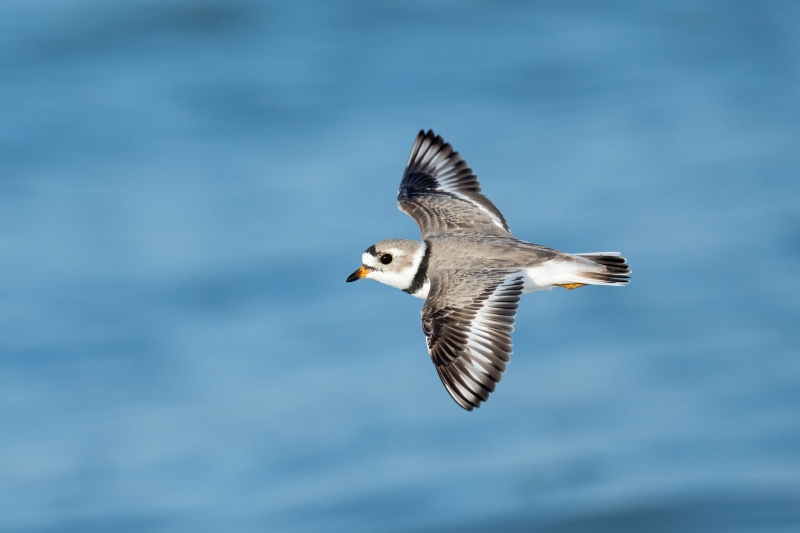
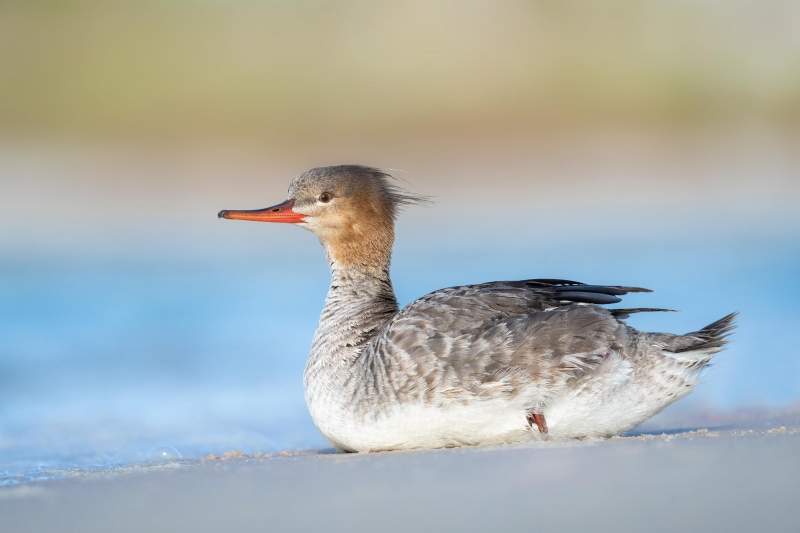
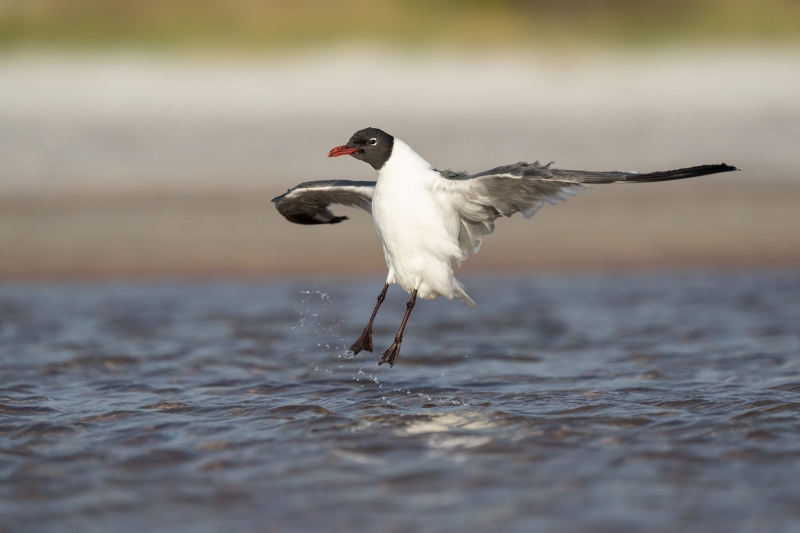
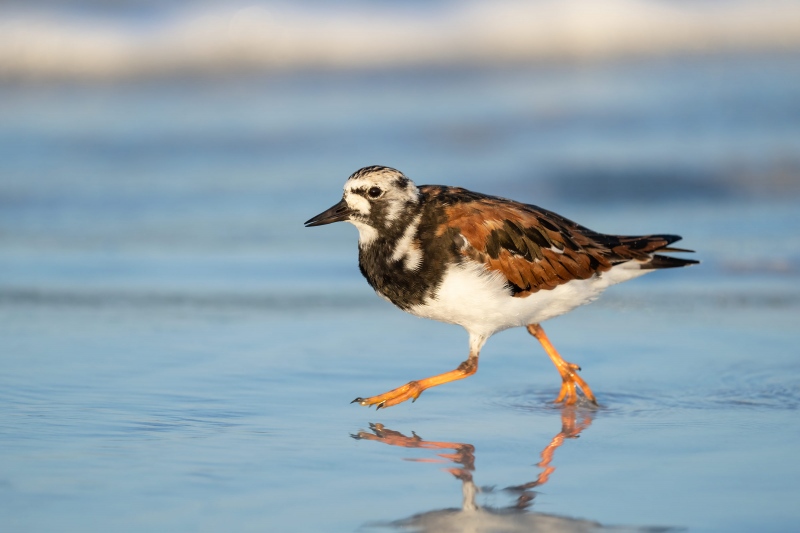
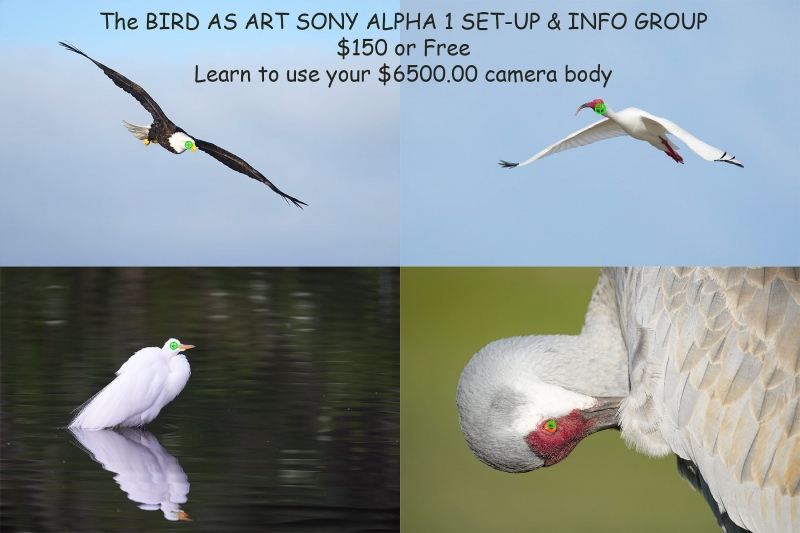
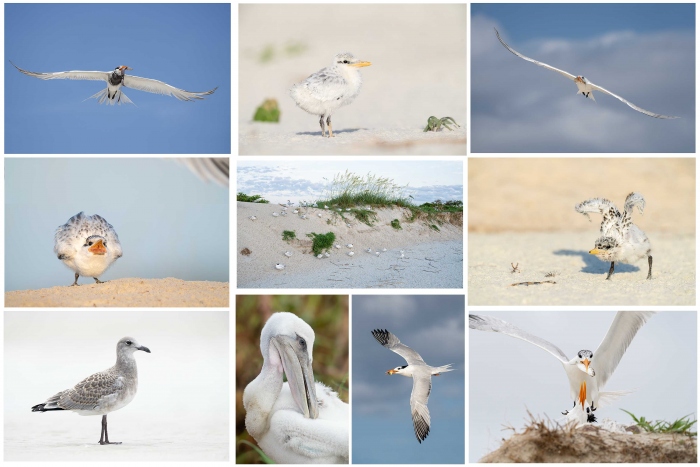













Merganser for me. Love the background against the bird.
Loooooooove the PIPL!
I have never seen such a beautiful image of a flying plover!
Four beauties, but best is (1) the flying plover (for obvious reasons), followed by (2) the running turnstone for the action, reflection, and beautiful water.